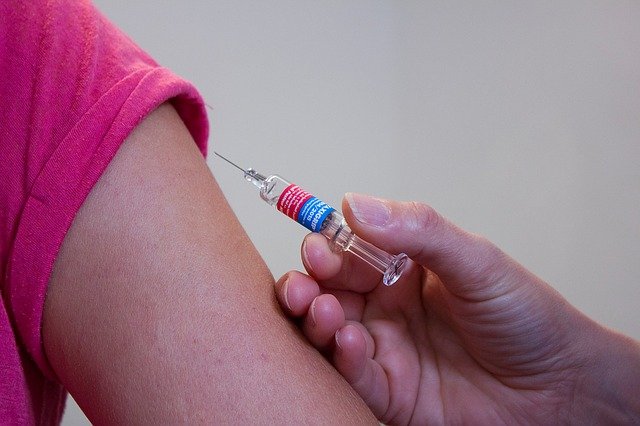
In a new study, researchers found that a novel nanoparticle vaccine that combines two major influenza proteins is effective in providing broad, long-lasting protection against the influenza virus.
It shows a promise as a universal flu vaccine.
The research was done by a team at the Institute for Biomedical Sciences at Georgia State University.
Influenza, a contagious respiratory illness caused by influenza viruses, is a leading cause of death by infection.
Seasonal flu vaccines are insufficient to prevent influenza outbreaks, and developing a universal influenza vaccine is the ideal strategy for eliminating public health threats of influenza epidemics and pandemics.
A universal influenza vaccine would eliminate the need for vaccinations each season and offers universal protection against all influenza strains.
In the study, the double-layered nanoparticle vaccine contains the influenza virus proteins matrix protein 2 ectodomain (M2e) and neuraminidase (NA).
Mice were immunized with the nanoparticle vaccine before being exposed to the influenza virus, and they were protected against six different strains of the virus.
The findings show this unique vaccine combination has potential as a universal influenza vaccine or component of such vaccines.
The team says this nanoparticle antigen combination conferred mice with strong cross-protection.
It can protect mice from different strains of the influenza virus. Each season, people have different flu strains that affect their health.
By using this approach, they hope this nanoparticle vaccine can protect humans from different strains of the influenza virus.
The influenza virus protein M2e is found in all influenza virus strains, with each strain having a very similar version, and the protein has mutated very slowly over time.
The protein NA is found on the surface of the influenza virus and has also mutated much slower than other influenza proteins.
This double-layered nanoparticle vaccine uses M2e as its core, and NA is coated on the surface.
Next, the researchers plan to load this double-layered nanoparticle vaccine onto microneedle patches for skin vaccination.
The lead author of the study is Ye Wang, a biology Ph.D. student at the Institute for Biomedical Sciences.
The study is published in the journal Advanced Healthcare Materials.
Copyright © 2019 Knowridge Science Report. All rights reserved.



